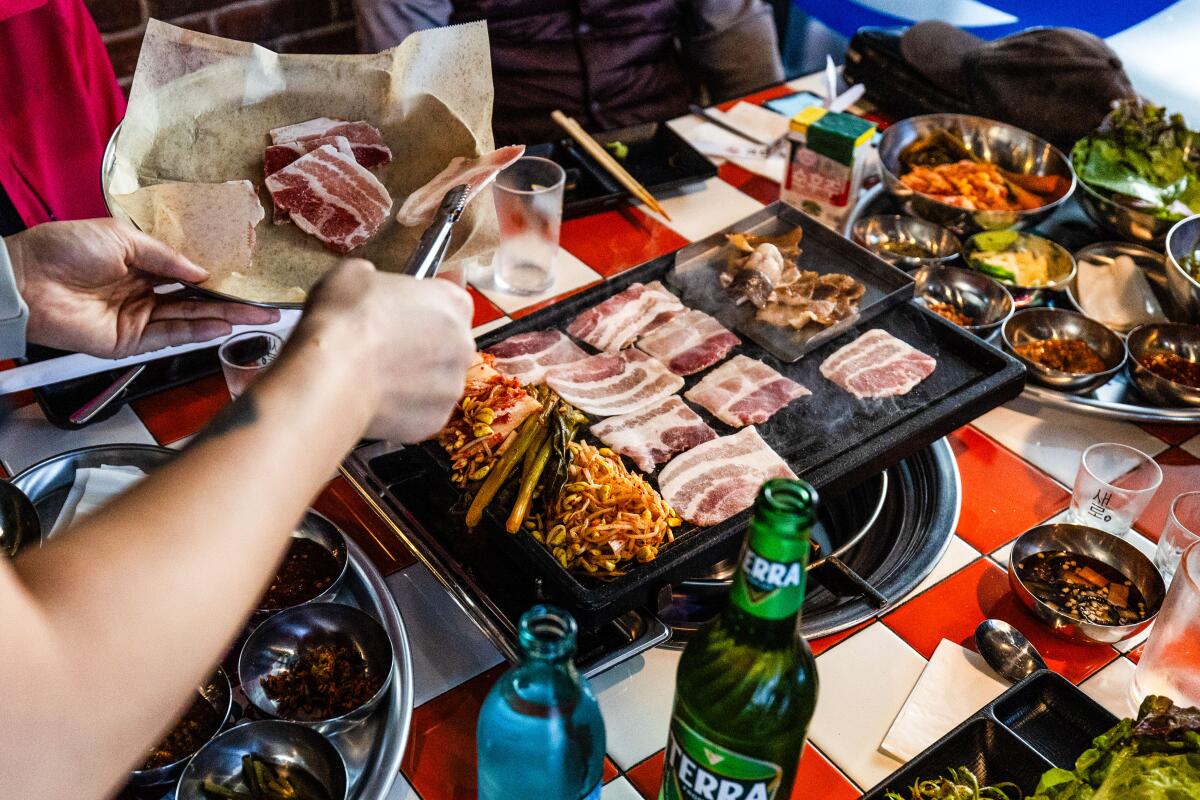
25 of the best Korean barbecue restaurants in Koreatown and beyond
- Share via
L.A.’s Korean barbecue landscape is vast and varied. Dozens of Koreatown restaurants specialize in meats for personal grilling, with a cooktop built into the center of each table for platters of (mostly) beef and pork in all their various cuts, providing theater and functionalism at once. It’s an essential, thrilling Los Angeles dining experience.
Each K-barbecue restaurant has its own take on what must be one of the best full-tilt ways to share a meal — primal and modern, elemental and lavish, continually changing.
New restaurants serving Korean barbecue open apace in always-transmuting Koreatown, and the latest include K-Team BBQ, the new Park’s BBQ sibling on Vermont Avenue, and Origin, which has taken over the Chapman Plaza location of Baekjeong (expected to resurface in a palatial L.A. flagship later this year). But long-standing icons keep diners coming back for their charcoal-fueled grills, attentive service, signature cuts or AYCE combos.
“Korean barbecue is becoming more like just regular barbecue” in its prevalence, said Jenee Kim of Park’s BBQ. “It’s not a Korean[-only] restaurant anymore. There’s other nationalities of people opening Korean barbecue. … I think Korean barbecue is becoming like that.”
Keeping up with what’s on trend is sport. Hanwoo beef at Daedo Sikdang, or dry-aged beef at ABSteak by Chef Akira Back, or yet more prime beef at Jeong Yuk Jeon Korean BBQ. The fatty, tender patties of tteok-galbi at Origin. The cheese fondue dipping sauce at Mun.
Do you prefer pink pickled radish wrappers, or rice paper wrappers? Wang galbi, LA galbi, tong galbi, yang-nyeom galbi or “bomb” galbi? Or maybe the litmus test for your favorite Korean barbecue is among the banchan. Which restaurant serves the best gyenran-jjim steamed egg? The best corn cheese?
Which ones have the best Katy Perry-free soundtrack? Which have the best ventilation? Here’s the thing: There is the perfect Korean barbecue spot for anyone and everyone, whether you love bulgogi or tripe, thick- or thin-cut pork belly, lengua or even duck, chicken or seafood. The world is your oyster — or your prime cut of beef.
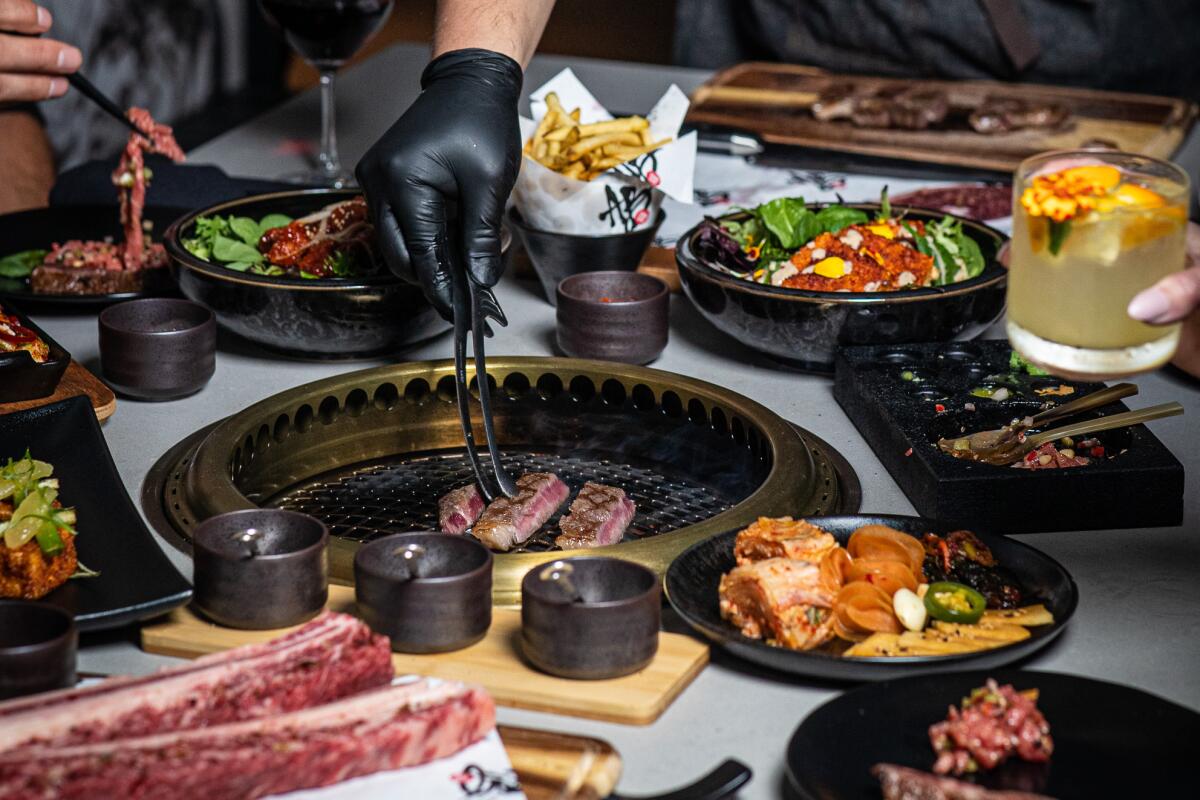
ABSteak by Chef Akira Back
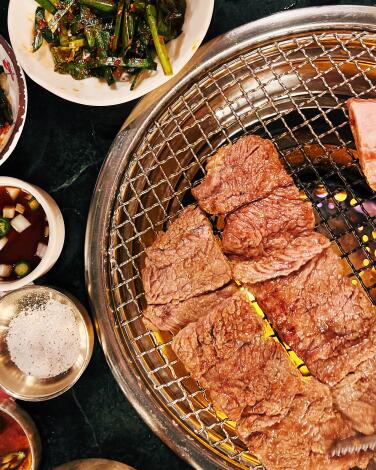
Ahgassi Gopchang
Friendly, attentive servers are always at the ready with their tongs and scissors, checking on the meat, keeping the soju flowing and providing extra banchan. You can’t really go wrong with a combo set, but it’s either intestines all the way or prime cuts only; order a la carte if you want to mix and match. A parade of sides will still ensue.
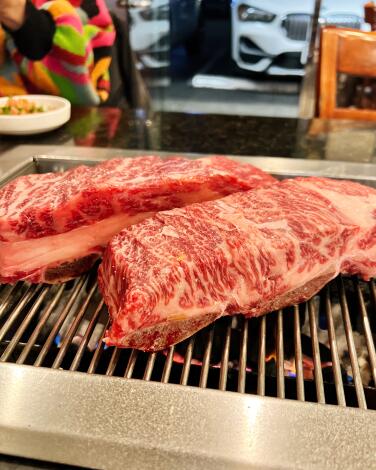
Book Sae Tong
As soon as you order, a server will fill the grill with a mound of coals and light them up. Because it’s a thick piece of meat, expect longer cooking times (some customers will call in an order in advance). As the tong galbi cooks, your server will begin to snip bite-size chunks of meat from the bone with scissors and return them to the grill to finish cooking. Finally, the bones are placed on the grill — so you can chew the crispy, fatty bits straight off of them. And the best of the sides? Mountains of briny baechu kimchi and the furiously bubbling gyeran-jjim steamed egg.

Borit Gogae
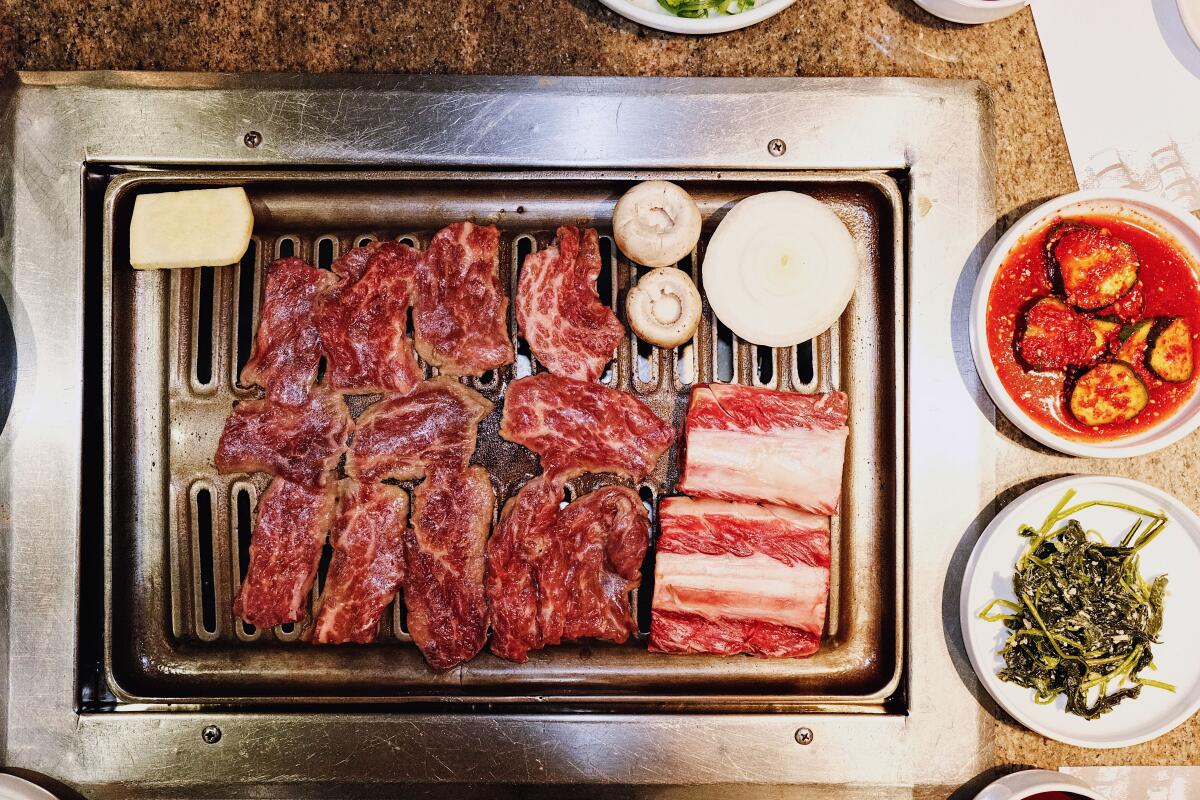
Chosun Galbee
The most popular choice, according to staff, is of course the namesake: Galbi is king here, served marinated or unmarinated and with two short planks of bone thrown onto the grill. Spicy pork bulgogi, black tiger prawns, marinated chicken and hearty slices of Berkshire pork belly also are available. The focus, however, doesn’t fall solely on the meat. The banchan is artful, with rarer bites such as thick cubes of jiggly rice cake dripping with chili crisp or the lemony, crunchy cauliflower florets in chilled cream sauce, as well as the more ubiquitous options done well: squares of scallion pancake with just the right bounce, potato salad brightened with pear, small whole wedges of cabbage kimchi with flavor seeping through every layer.
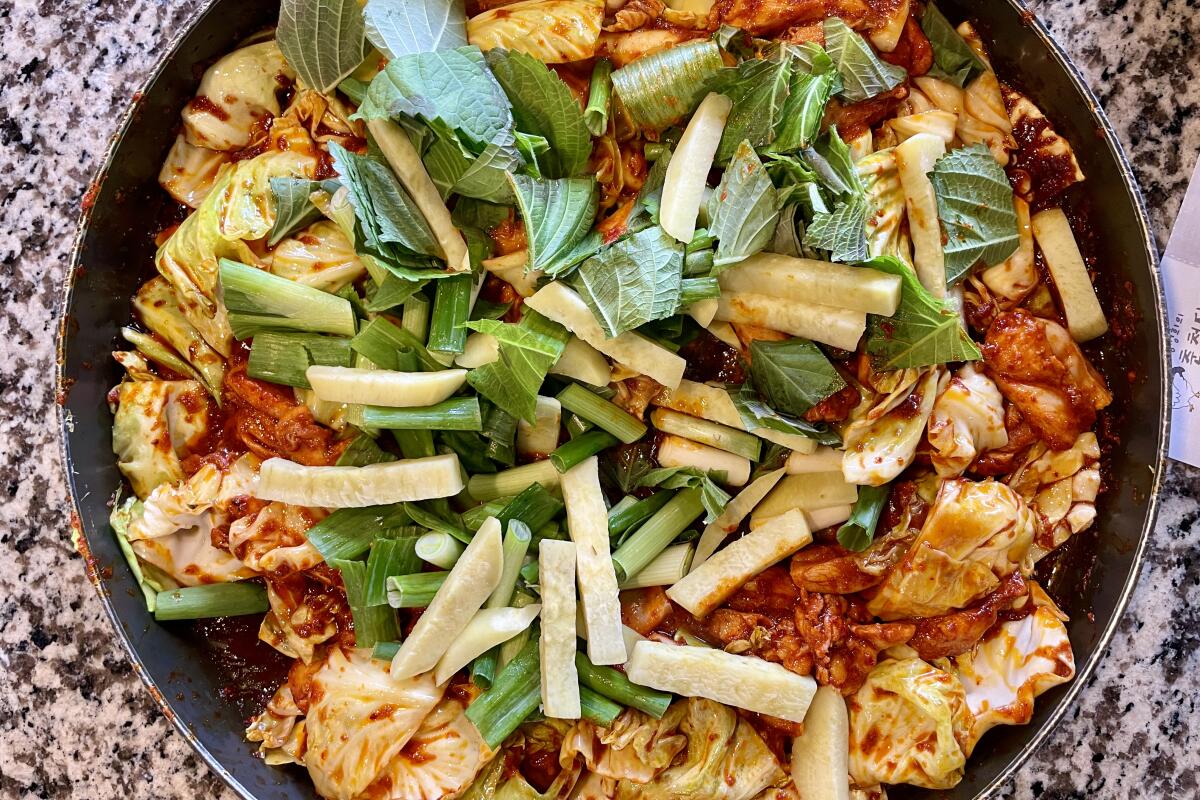
Chuncheon Dakgalbi Donghae Makguksu 2
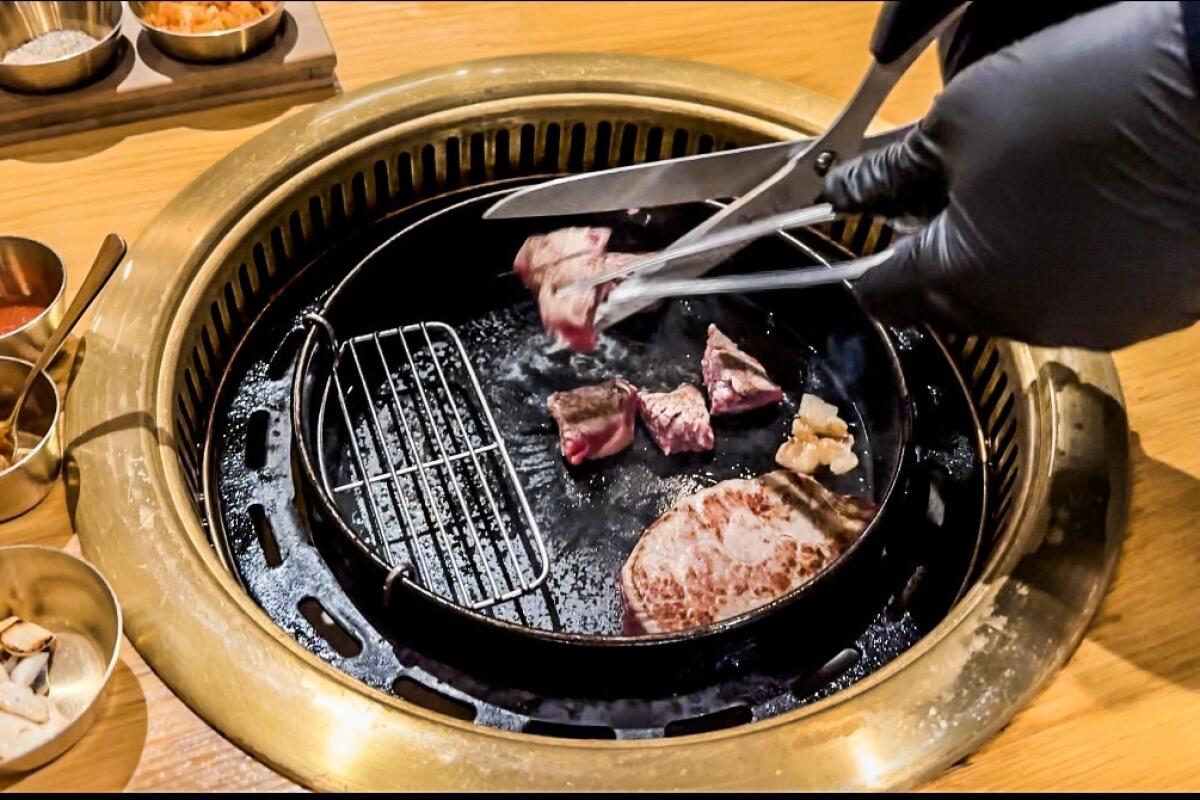
Daedo Sikdang
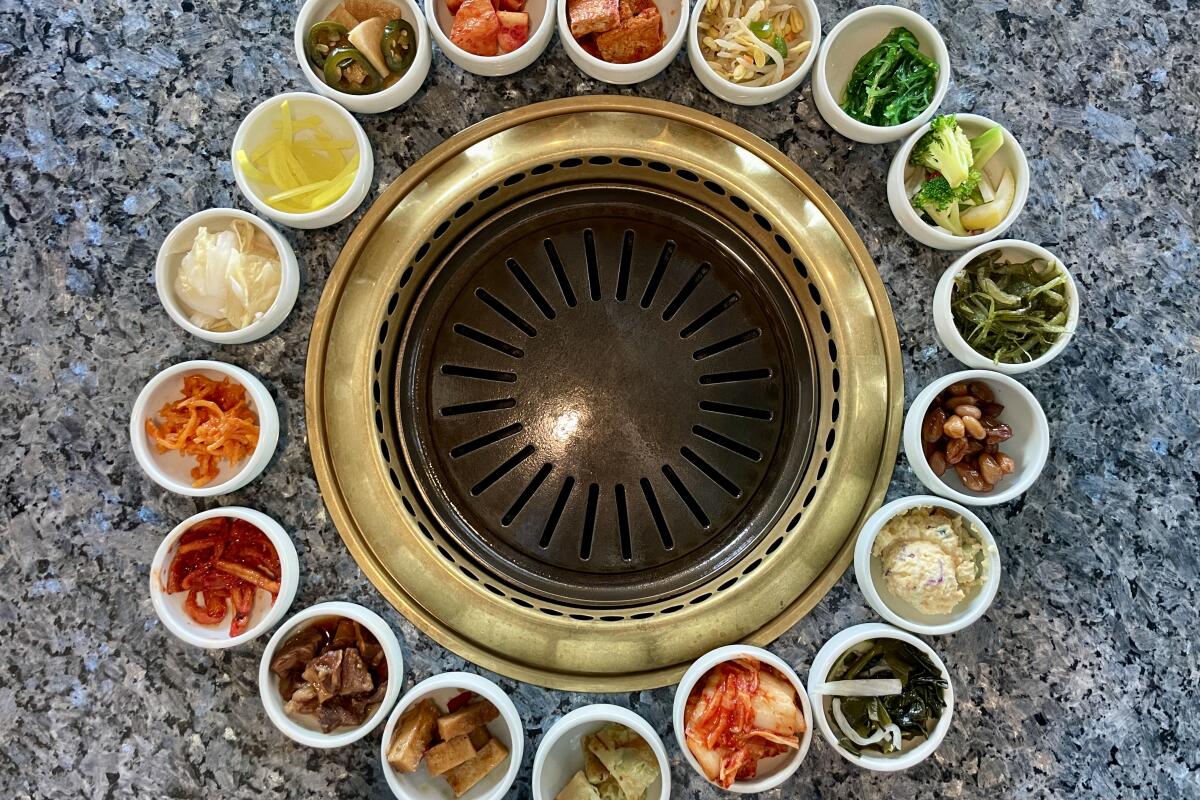
Genwa Korean BBQ
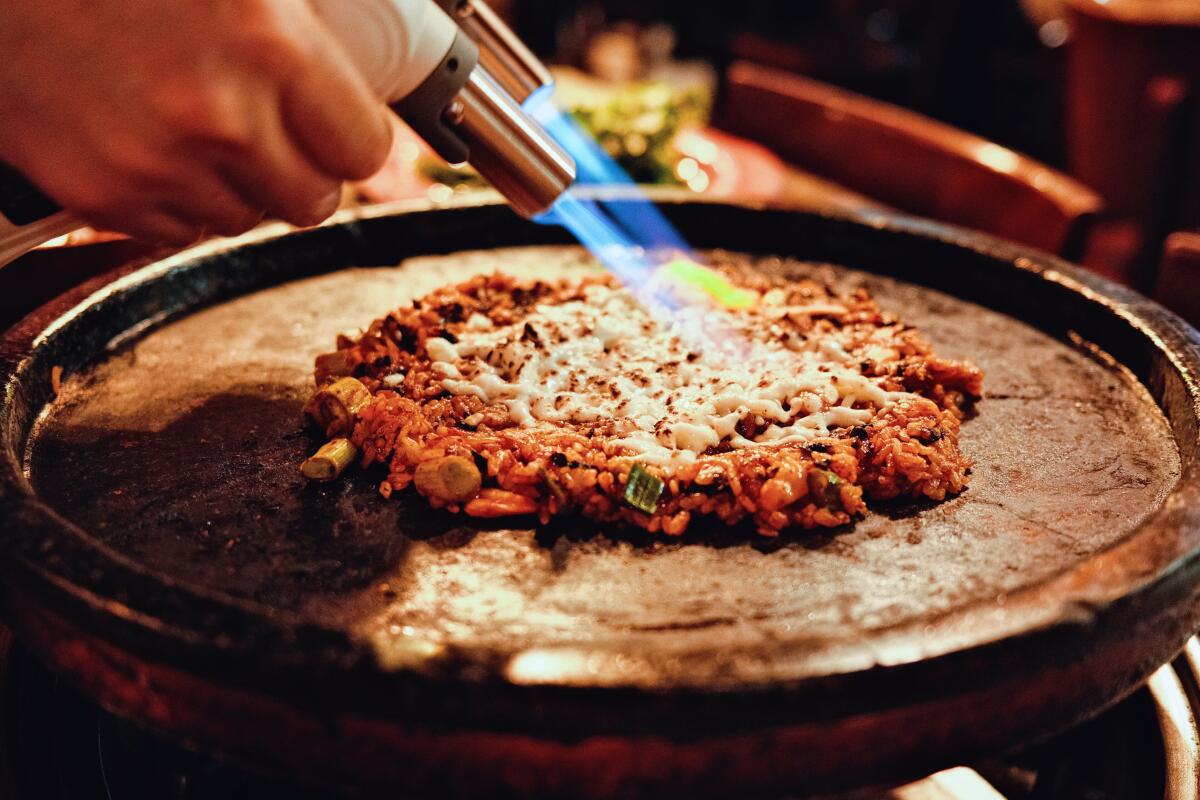
Hae Jang Chon
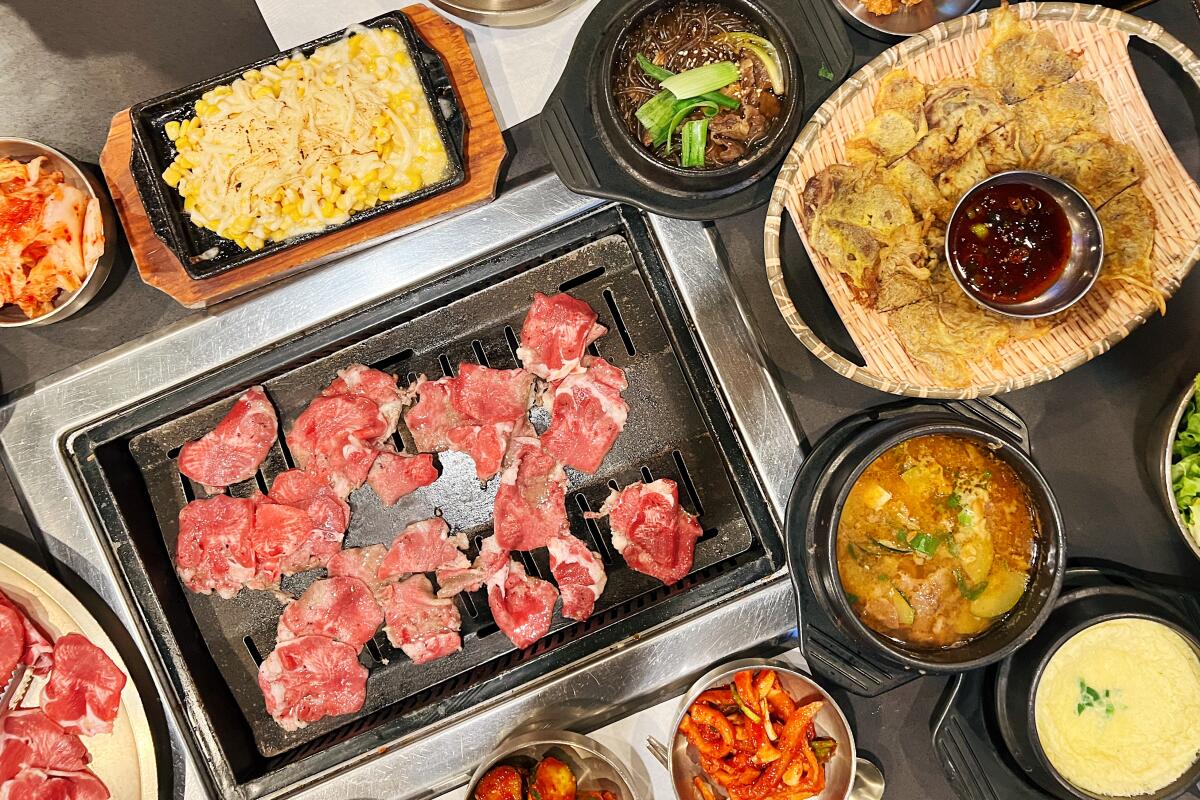
Hanu K BBQ
The meat combos — priced at $109.99 to $169.99 — are crowd pleasers, with all your favorite beefy cuts such as Black Angus rib-eye steaks, sliced brisket, outside skirt, marinated short ribs and short rib patties. Pork jowl and pork belly also are options. If you’re a gopchang fan, mountain tripe, small intestine and abomasum (stomach) come with brisket, or a la carte.
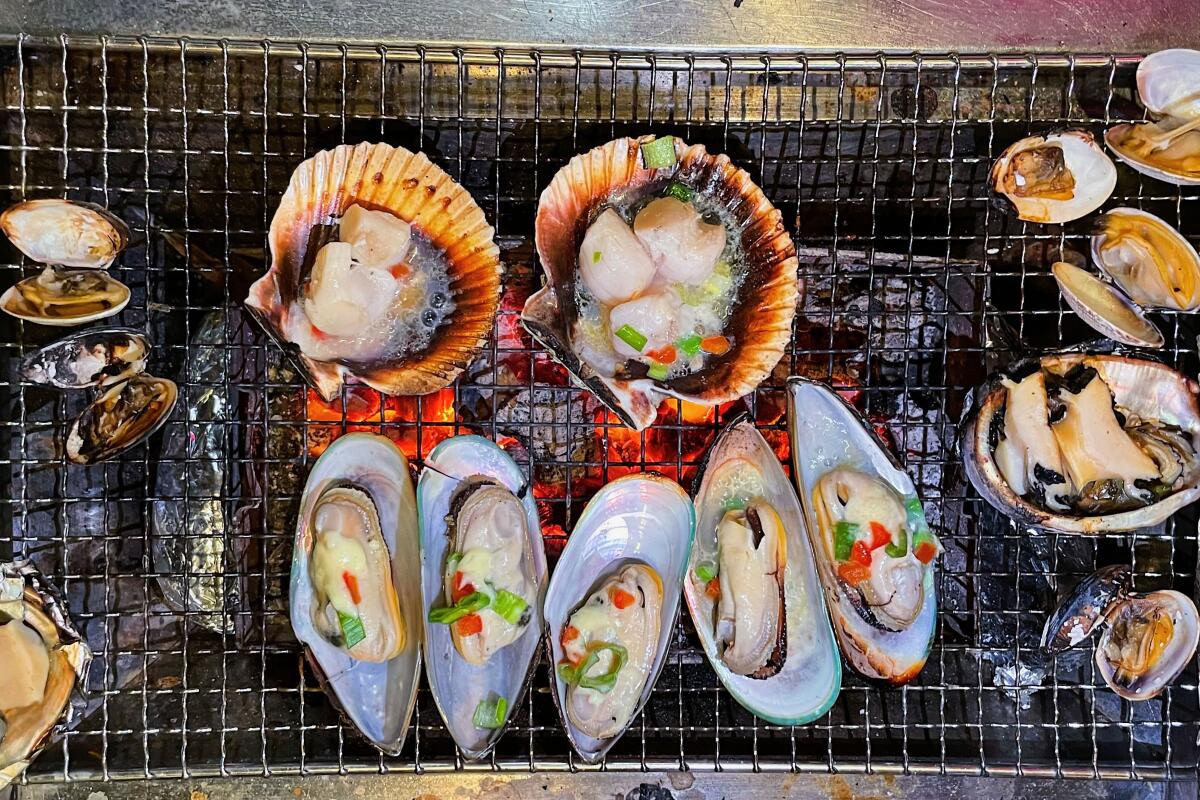
Jae Bu Do
Many of its specialties are available a la carte, but the best deals are the set meals, which range from $85 (feeds two) to $200 (feeds four to five) and provide an onslaught of shellfish: plump oysters bubbling in their shells; abalone so fresh from the tank it’s still undulating; baby octopus coated in chile; croaker and potatoes that cook in the embers; the spindly hagfish, which twist and turn and crisp up beautifully; scallops served both in-shell and in small tubs of buttery broth; and whole steamed lobster. While some seafood comes dressed and marinated, much of it is left to simmer and char in its juices, allowing for natural flavors to shine. A post-grill quick dip into a sweet-spicy chile sauce can brighten each bite, but Jae Bu Do’s message is simple: When kissed with charcoal, straightforward, fresh seafood needs little else. Don the provided gloves — all the better to grasp those piping hot shells pulled straight off the small grill — and dig in.
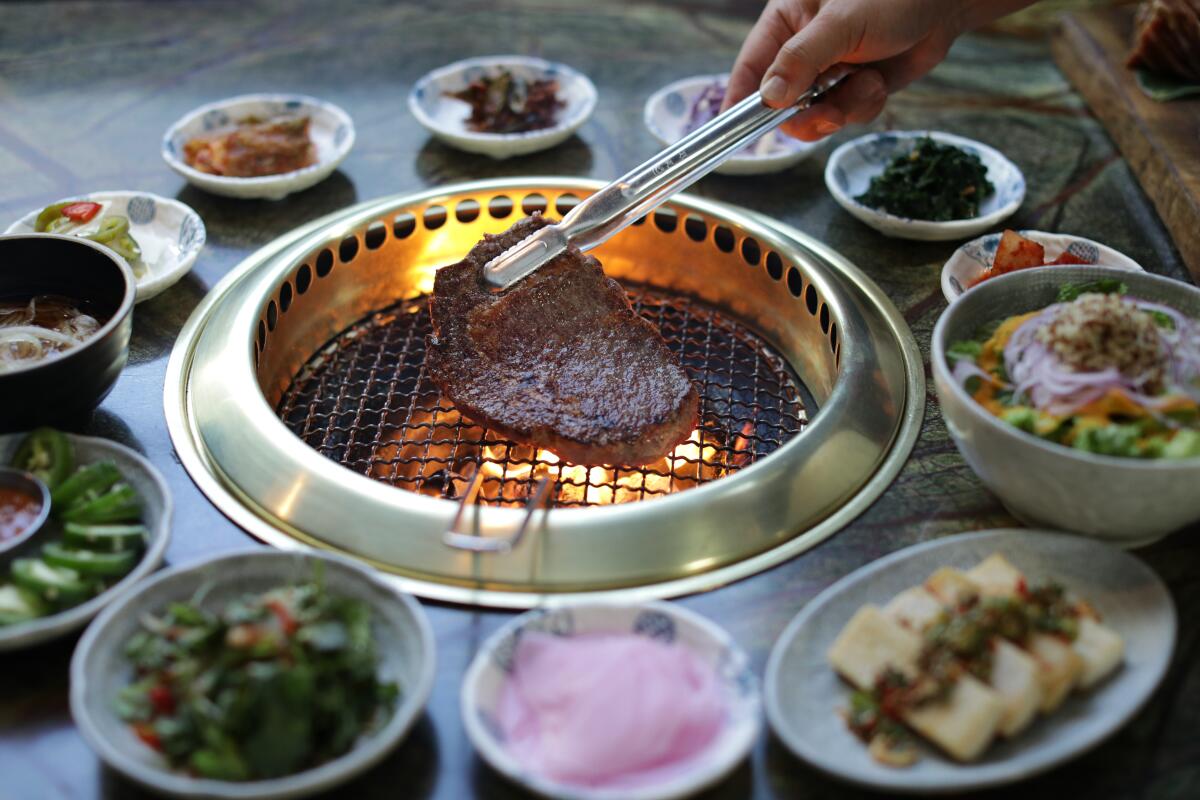
Jeong Yuk Jeom Korean BBQ L.A.
The restaurant, located on the first floor of MaDang mall (above H Mart), does brisk business, particularly during prime dinner hours, and the space is certainly part of the appeal: Reach the main dining room via a theatrical ramp lined with green runway lights. You’ll pass under ancient beams, made from birch and zelkova and brought over from a dismantled temple in China, flanked by walls of glass shelves lined with glowing bottles of soju. Service doesn’t always match the glam atmosphere. I’ve had well-paced dinners here, and other experiences, including my most recent one, where the server grilled our meats in such rapid succession that we were done in less than 40 minutes. When ordering $200 worth of steak, who wants to feel so rushed?
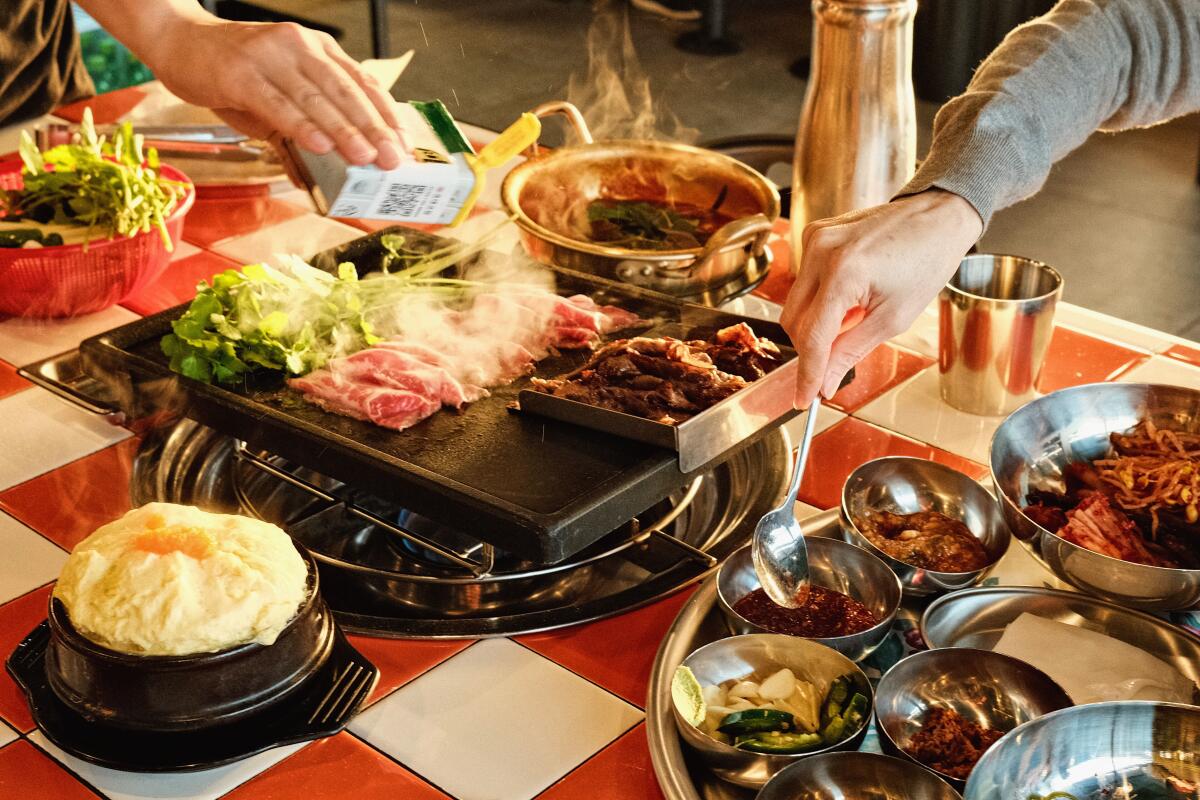
K-Team BBQ
As the sun dips behind the Hanmi Bank building across the street, its final rays stream into the big windows at K-Team and the grills fire up — flat grills slanted so that fat from the meats is caught in a tray at one end, with a corner compartment for transferring anything fully cooked. The array of ssam ingredients is dazzlingly fresh: huge sesame leaves and crispy lettuce along with crunchy bean sprouts, spicy kimchi, slivered scallions and pickled garlic chives. Beef options include tongue, brisket and thin-sliced rib-eye. But the specialty here is pork: thin pork belly, thick pork belly, pork collar steak, thick pork collar or pork jowel. Unlike most Korean barbecue restaurants in Koreatown, K-Team doesn’t offer combos, but all a la carte orders come with steamed egg, spicy rice cakes and all of the aforementioned accoutrements. Don’t skip the add-ons: myeonglan paste (pollack roe) or minari, king oyster, shishito and potato.
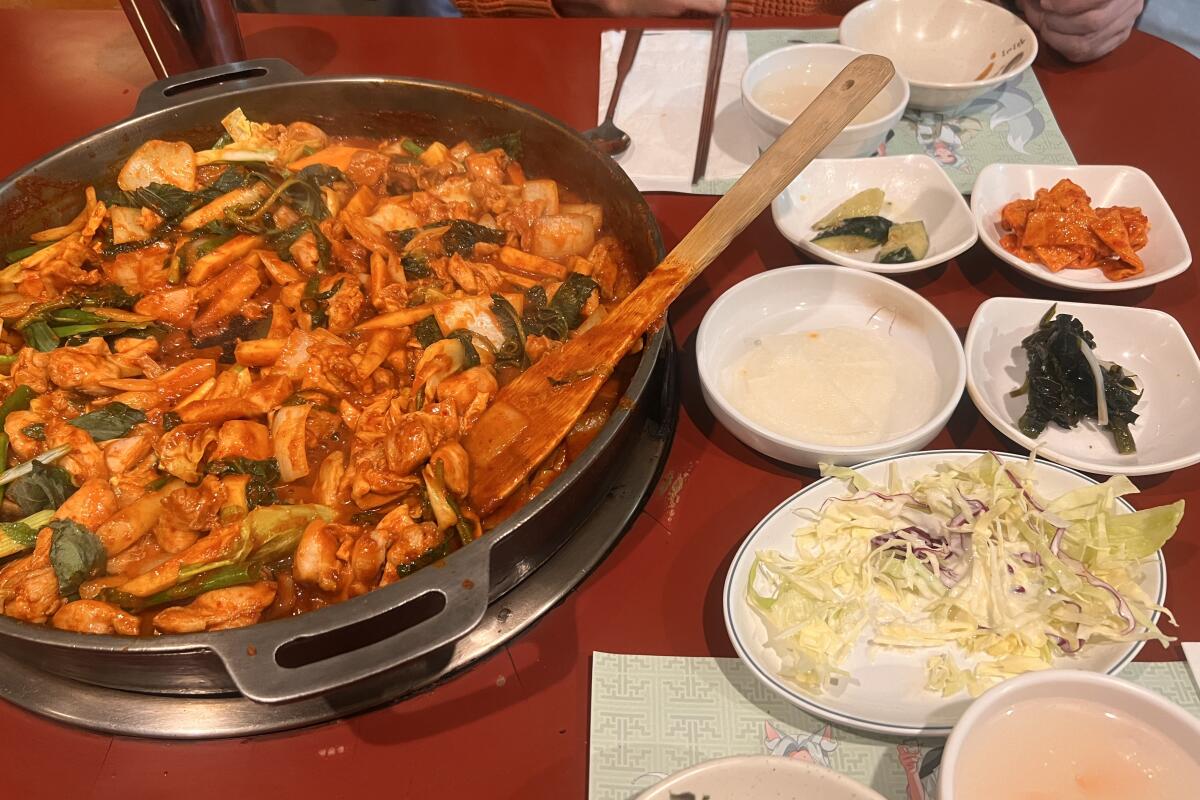
Mapo Galbi
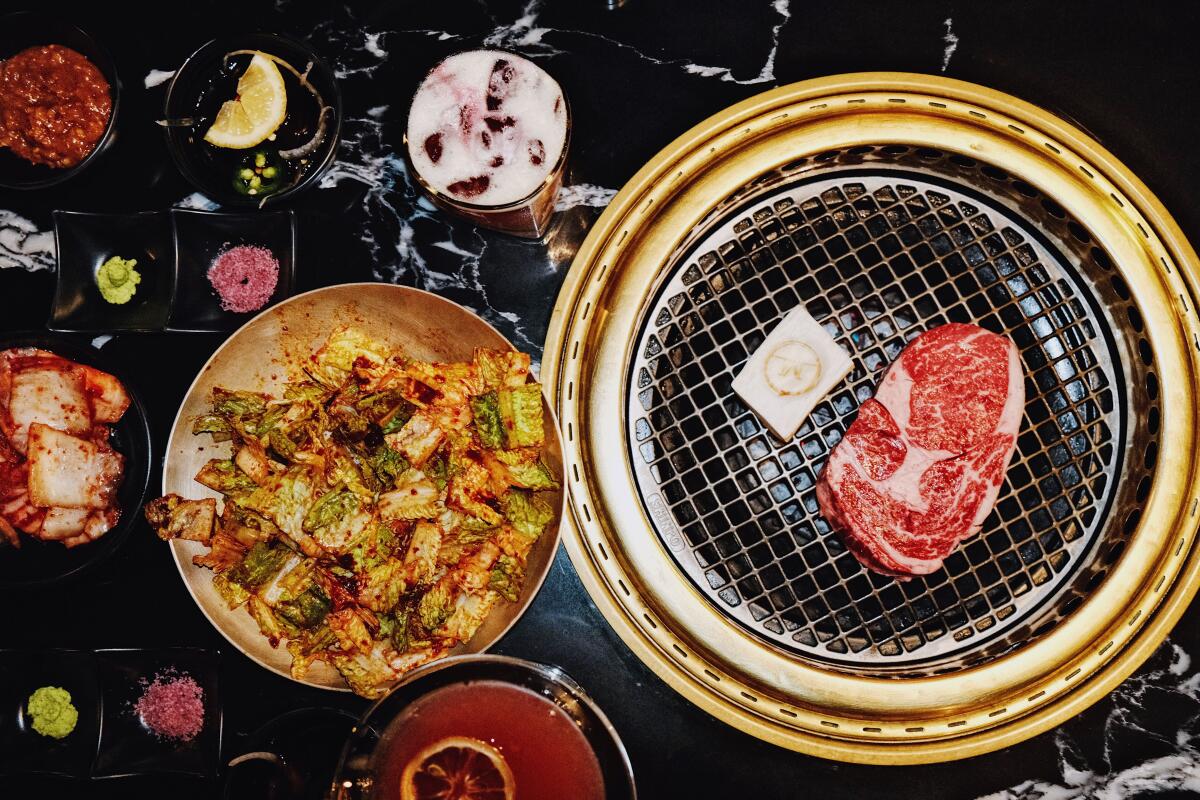
Mun Korean Steakhouse
There’s balance to every element of the set meal, including the wine-infused dipping salt; the flavorful, snappy japchae rife with wood-ear mushrooms, peppers and onions; the rich and beefy signature stew; the decadent cheese fondue that simmers on the grill throughout the meal; and the refreshing seasonal slush to finish it all. The bulgogi patties served with mustard salad make it worth ordering the “Mun’s Choice” set, which provides a taste of most of the house specialties for $60 per person, but a la carte dishes like the pear-dotted Wagyu beef tartare are worth supplementing. Bring a date or bring a crew for one of the vibiest Korean barbecue nights in Koreatown.
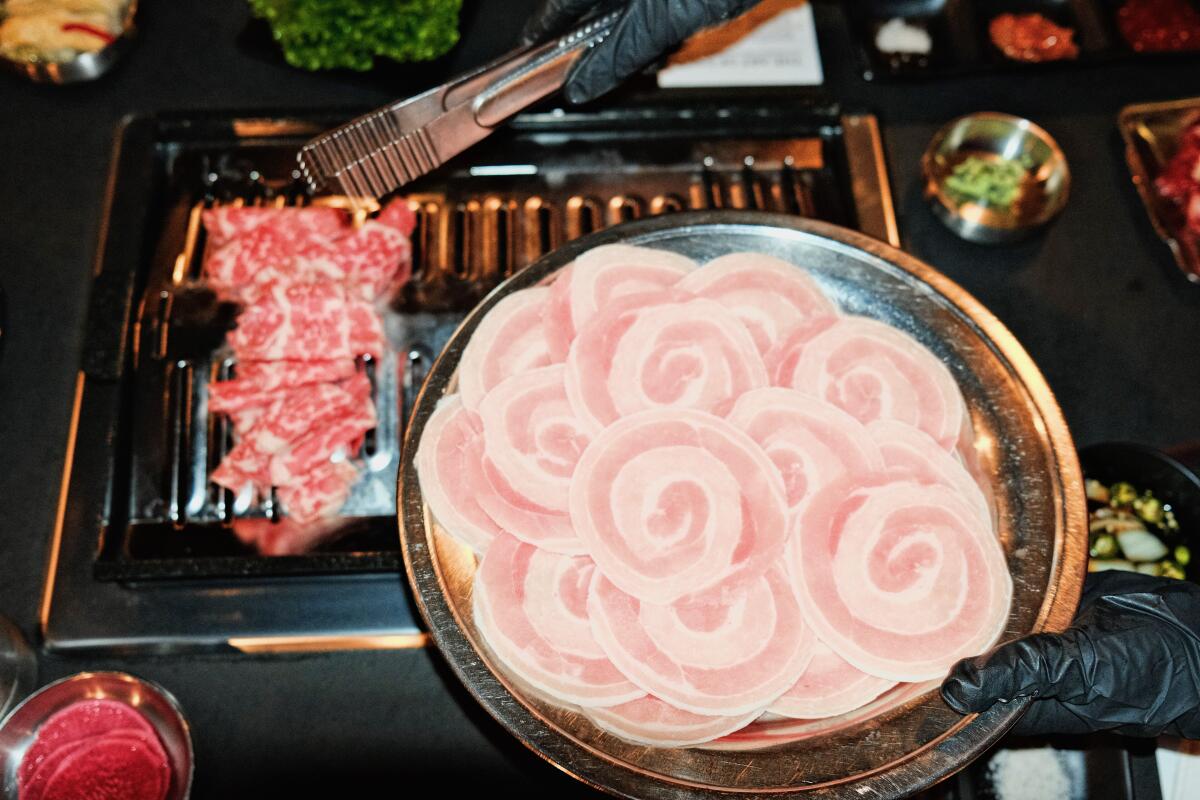
Origin
Beef and pork are both thoughtfully considered, with standouts like the marinated beef short rib patty, or tteok-galbi, which grills as a thick and delectably fatty puck, then is sliced into bite-size morsels, or the thin spirals of pork belly that curl and crisp up at the edges. The house special set is a feast and a bargain at $95 for two or $175 for four, with four cuts of meat plus ssam, steamed egg, corn cheese that sizzles on its own separate grill top, and a cauldron filled to the brim with Origin’s signature soup, the unctuous soybean-paste hot pot with ramen and rolled brisket, with a broth that’s simmered at least five hours for a flavorful final bite.
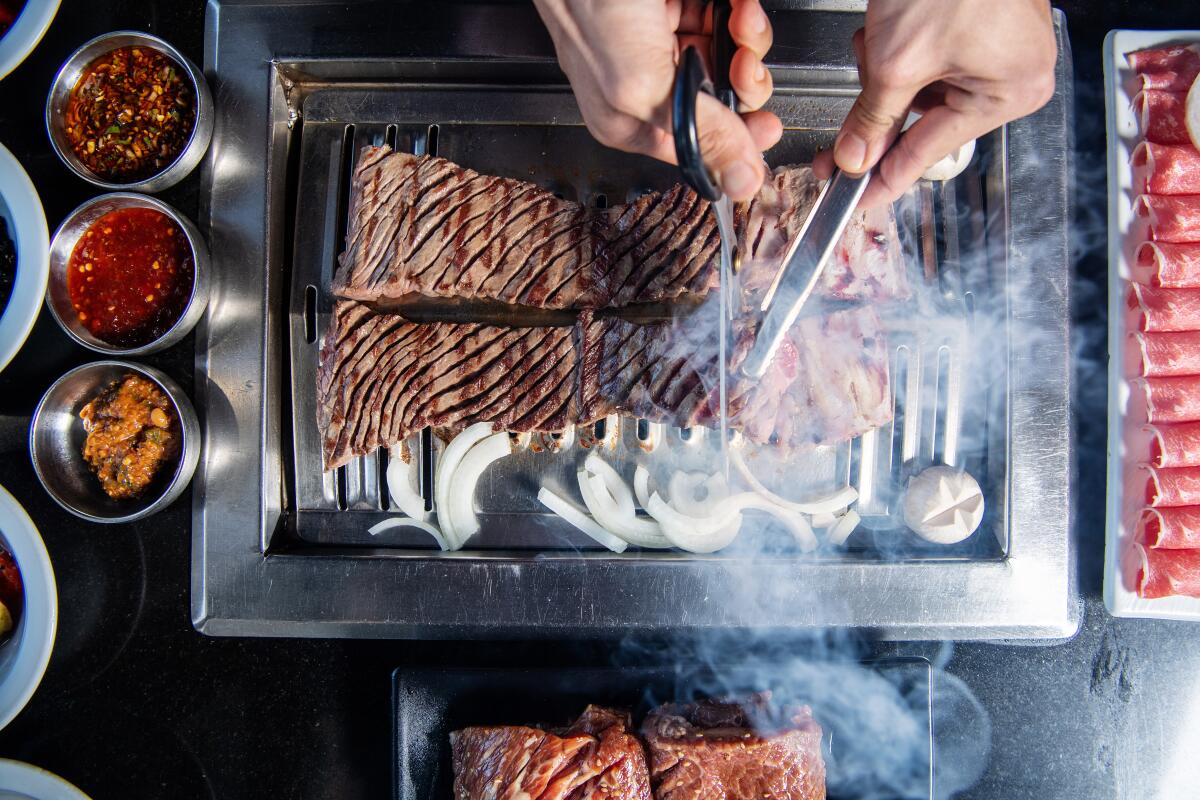
Park's BBQ
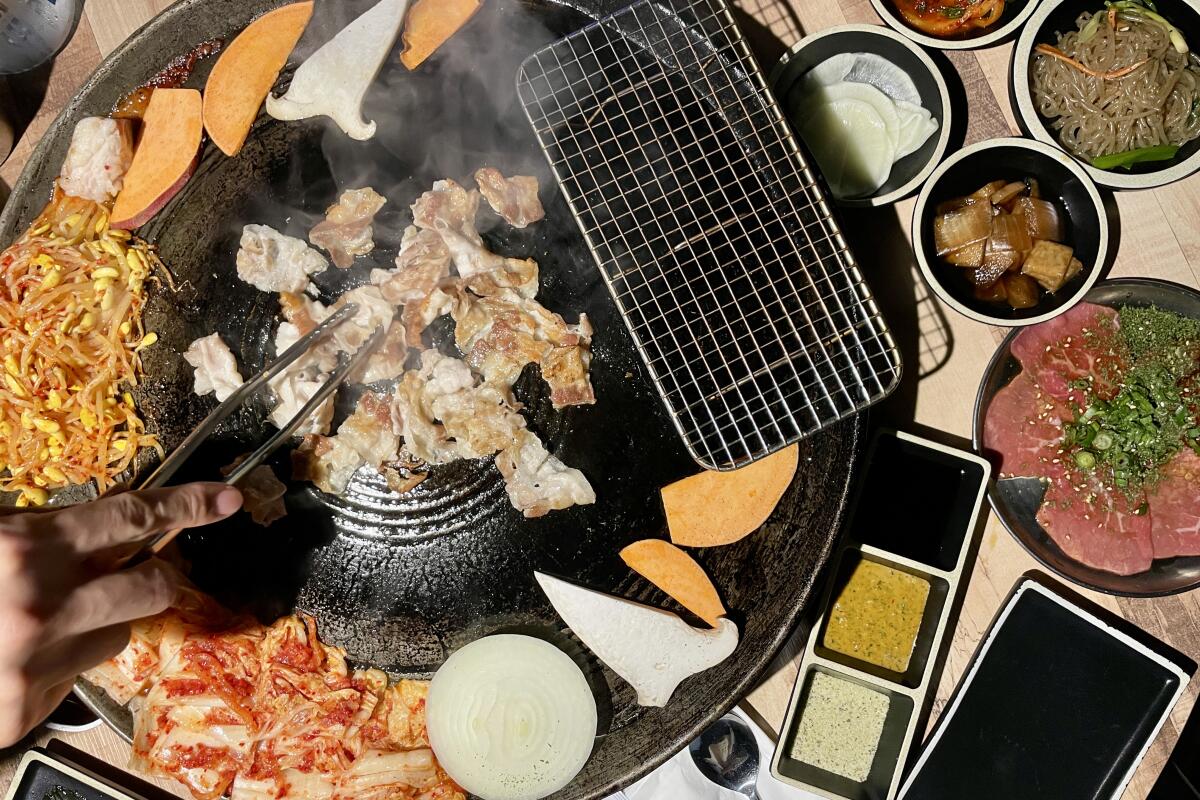
Pigya
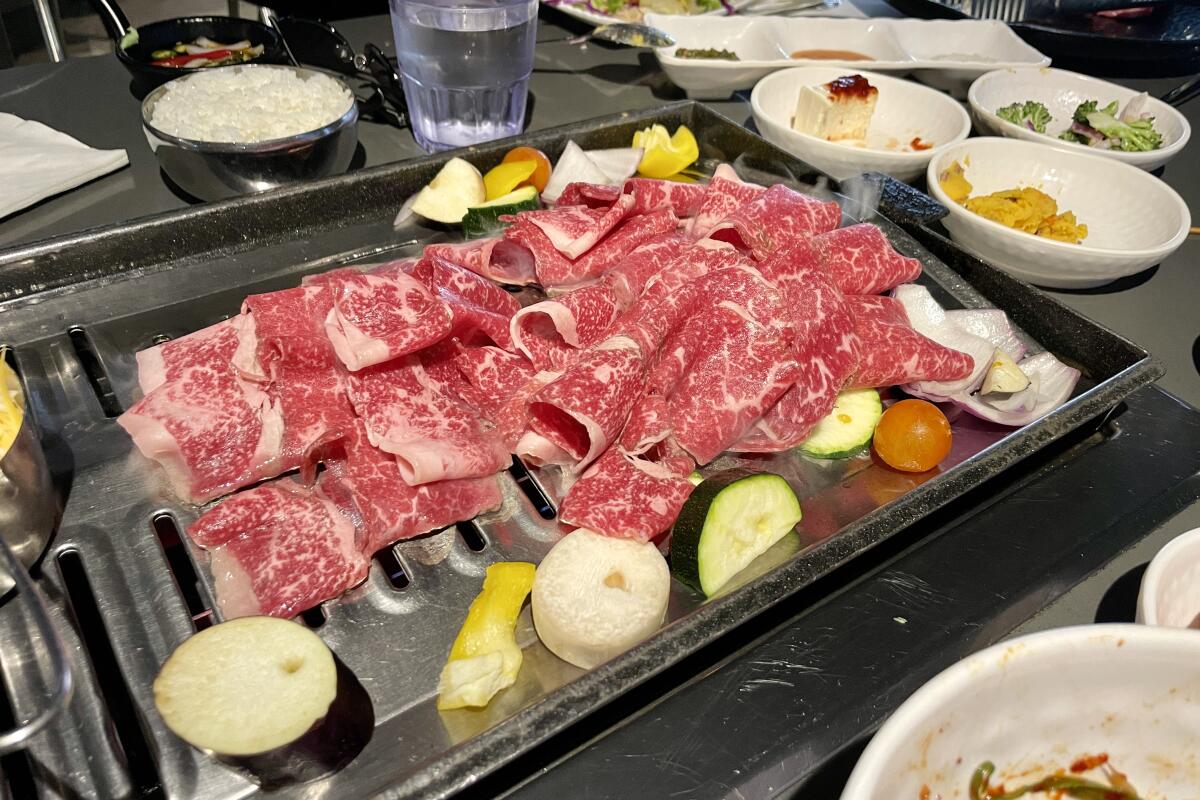
Quarters Korean BBQ
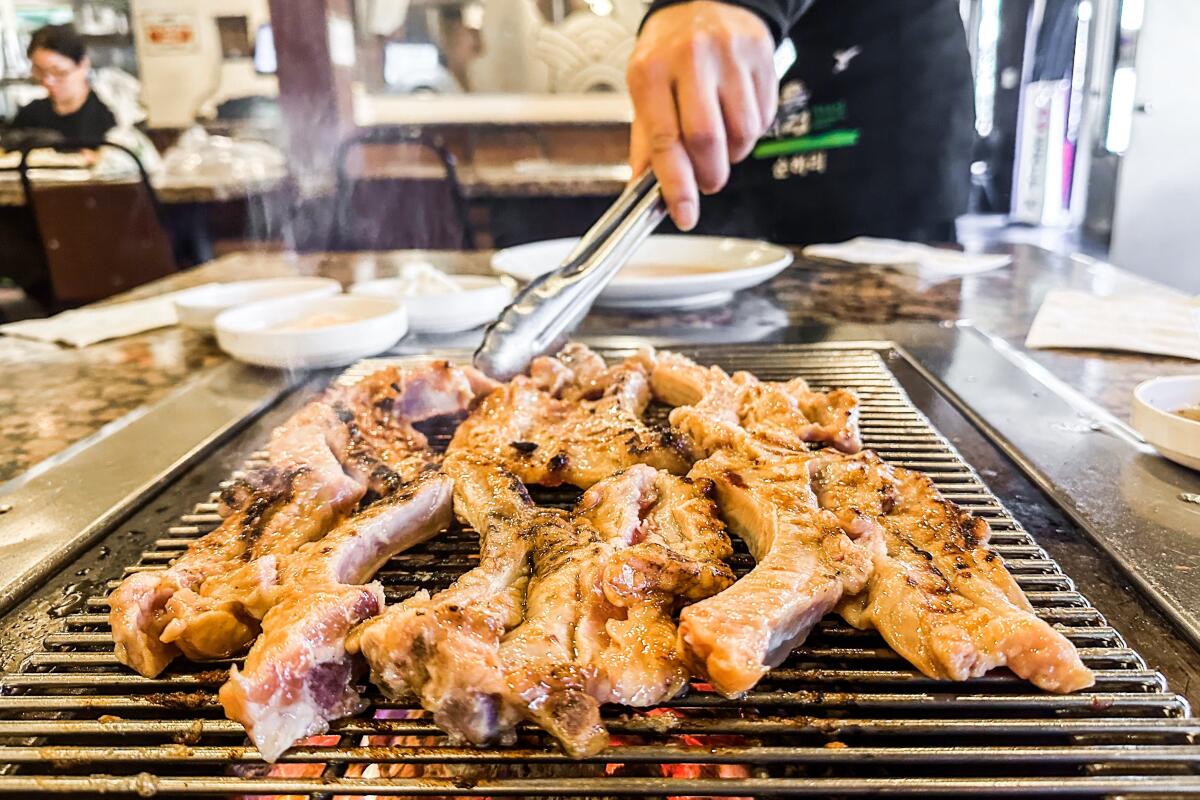
Soot Bull Jeep
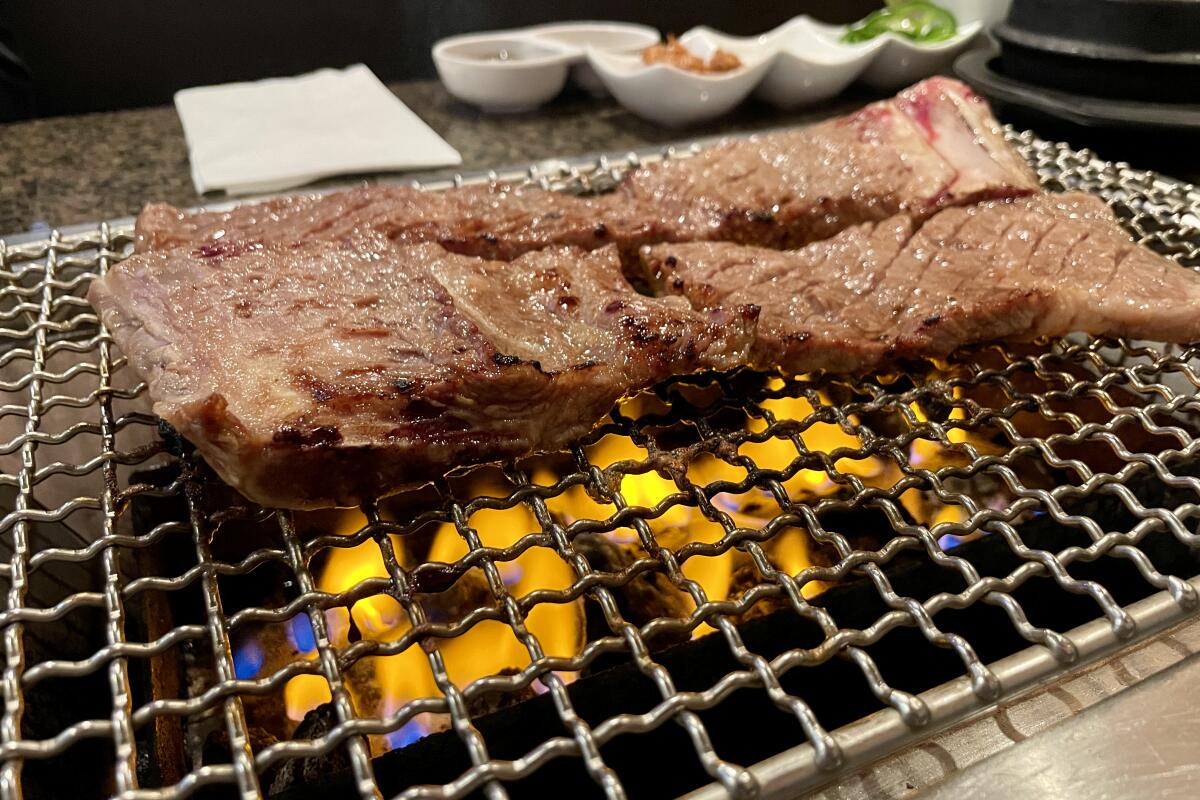
Soowon Galbi
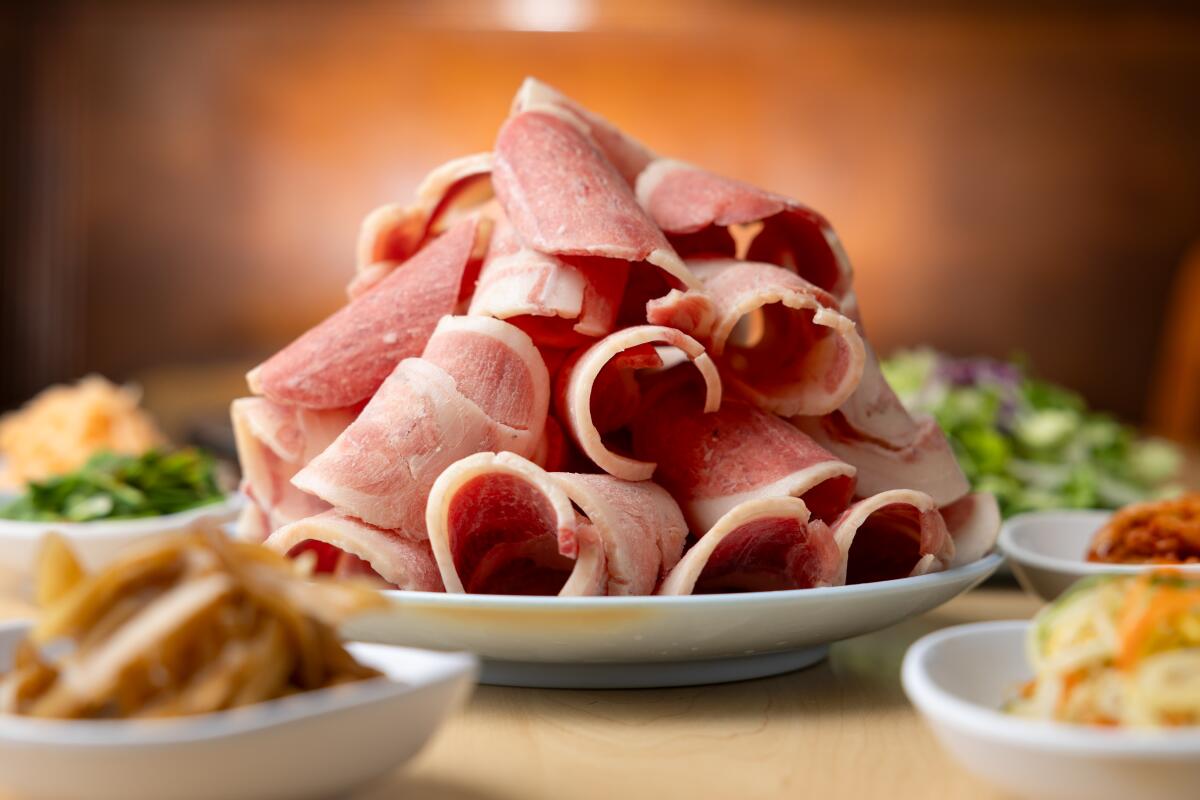
Sun Ha Jang
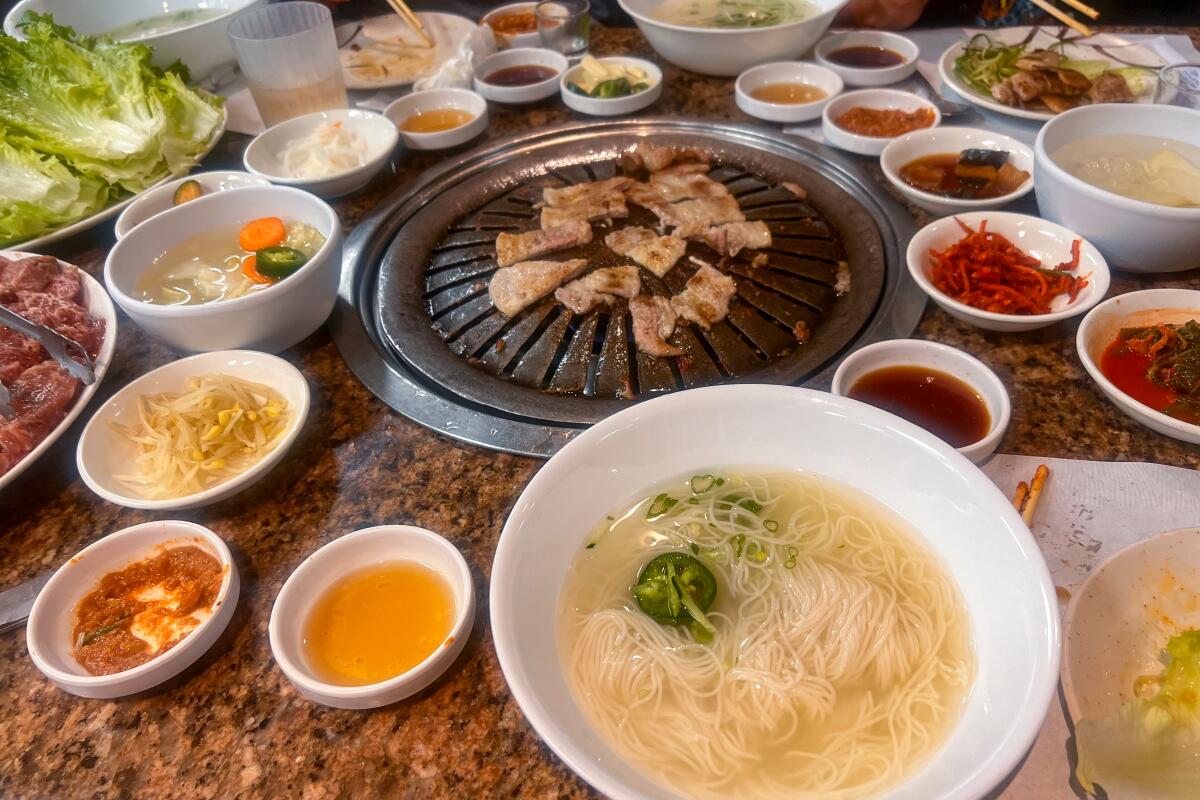
The Corner Place
The banchan is fairly simple and you’ll have to add sides such as spicy ssamjang dipping sauce and lettuce to wrap your meat in. The cold noodle soup is the perfect contrast to the juicy meats and a refreshing option for hot summer days. As a bonus, you can park for free in the restaurant’s lot.
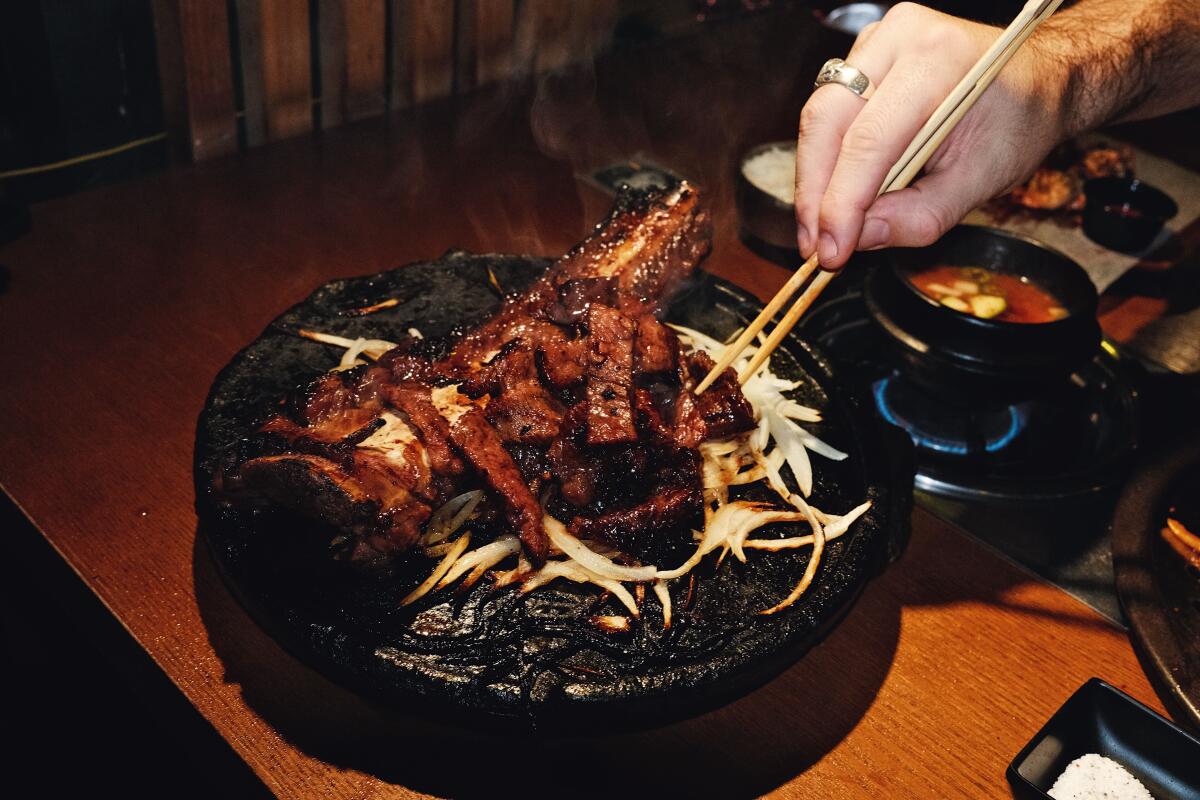
Woo Hyang Woo
The star of the menu, however, is the show-stopping, large-format tomahawk: Thick, hearty slices of the prime, aged steak sizzle and pop with heaps of onions alongside the massive bone, drawing the attention of nearly every table in the place. For smaller parties, Woo Hyang Woo also offers short-rib tomahawk for two, where the tender galbi is served in a similar fashion though with a smaller — but still sizable — bone. Diners can pick between grilling meats at the table or letting the kitchen do the work, which is advised for the tomahawks, which can prove unwieldy. Other options include brisket, pork jowl, thinly sliced beef tongue, bulgogi and other K-barbecue standards, plus a la carte soups, fried appetizers and an array of wine, soju, cocktails, beer and sake.
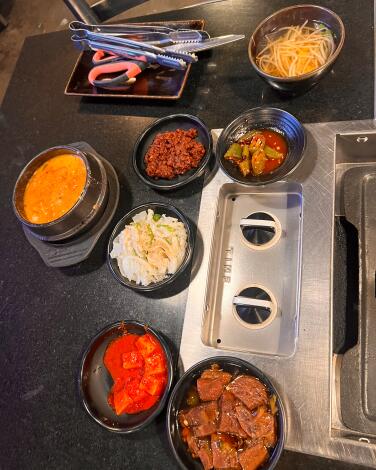
Yangmani
Eat your way across L.A.
Get our weekly Tasting Notes newsletter for reviews, news and more.
You may occasionally receive promotional content from the Los Angeles Times.







